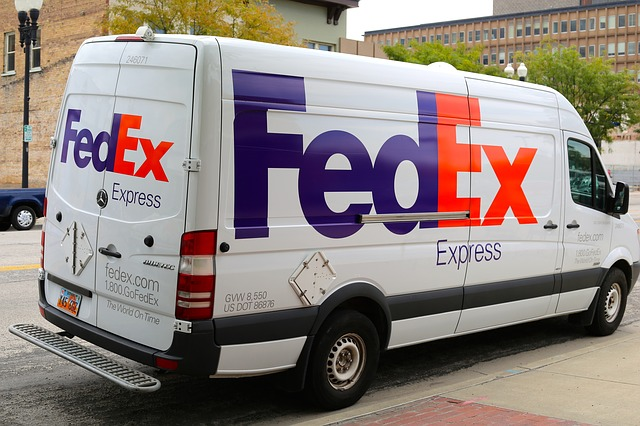Shipping services are a key cog in the commerce industry. From eCommerce stores to logistics providers, weighing your shipping options is critical to creating efficiency and saving money in your operations. One way to accomplish this is through the use of shipping APIs.
The most common questions are, what is a shipping API and what value does it bring to your shipping operations? Well, let’s find out.
What are Shipping APIs and What Do They Do?
An Application Programmable Interface (API) for shipping enables enterprises to add shipping features to their online stores or current business systems. Businesses may quickly ship, track, and complete consumer orders from within their own applications by using shipping APIs.
By enabling programmers to include shipping functionality directly into your business systems or e-commerce website, a shipping API allows businesses additional flexibility. The shipping API can be modified for certain business requirements and shipping companies to enhance fulfillment.
For the best overall user experience and growth, each firm must overcome its own special challenges. You can move closer to long-term success by comprehending the components of a successful shipping plan and what a shipping API can provide for your company.
What does a shipping API allow for?

APIs allow information to be sent between two distinct apps and be shown to a user within a single interface. In general, an API enables developers to utilize and incorporate specific technologies into their applications. This is accomplished by making programming less complicated by providing developers with the actions they require.
For multicarrier functionality and support, a shipping API can interface with numerous domestic and international carriers (such as USPS, FedEx, DHL, etc.). A shipping API can access the entire carrier network by integrating once rather than with each individual carrier separately.
Ecommerce companies use shipping APIs to deliver orders to clients, offering a variety of alternatives to suit the needs of various enterprises. Businesses, shippers, and customers are all connected through shipping APIs.
How Can Shipping APIs Help Your Business?

You can compare shipping costs for a certain cargo among all carriers using shipping APIs. This enables your company to examine possibilities right away and select the best fit. Additionally, this ultimately saves money and time spent manually evaluating various options.
Simpler language
A good API will give you a straightforward user experience with little disruption so you can concentrate on expanding your business. There are only a handful of types of API services that are used to make connecting applications easier.
Shipping that is trustworthy
Online retailers may fully automate the checkout process and integrate shipping and delivery directly into their business models by leveraging shipping APIs. This will not only save the company time, but it will also give the customer a far better buying experience.
Cut back on abandoned checkouts
Many businesses struggle with checkout abandonment. At the checkout stage, you probably lose the majority of your consumers. Shipping problems are to blame for a sizable portion of this cart abandonment.
Consumers will not hesitate to abandon If they don’t like their delivery options, don’t get offered free shipping, or don’t see transparency in shipping fees. To locate better delivery choices, 60% of customers will visit another retailer.
A shipping API allows you to provide more shipping options, provide real-time shipping rates, and much more. You can give your consumers a better experience by utilizing API-enhanced access to compare rates and delivery options.
Resources for real-time shipping rates
Being able to integrate with a range of shipping carriers to acquire the best shipping rates for your customers is essential in a market where major players like Amazon have raised the bar for the eCommerce experience.
Real-time quotes from numerous carriers are included in shipping API integrations, enabling customers to select the delivery option that best suits their needs.
Worldwide address verification
The ability to verify addresses automatically using shipping APIs is a huge win. This avoids charges and delays for products sent to invalid or missing mailing addresses. It’s crucial to ship to the correct address to cut expenses and foster customer loyalty. It costs money for your company to dispatch a new package or redeliver a returned package.
Shipping problems erode customer confidence. If an item they purchase isn’t delivered within two days of the date stated, a majority of customers may be less inclined to purchase from your company in the future. Your business’s reputation and future revenue from repeat customers are protected by timely and safe package delivery.
Regardless of the volume of shipments, unsuccessful deliveries and address change fees can harm a customer’s opinion of your company and reduce sales. Services to validate addresses will make sure packages are delivered to the right place the first time.
On-going tracking
A useful tool is the ability to track goods across many carriers and generate tracking events to keep clients informed. It provides the consumer with more information about the anticipated delivery date as well as any unforeseen problems that might arise during the shipment and delivery procedure.
You can incorporate real-time tracking into your app, email, or text messages using shipping APIs. This makes immediate, crucial information accessible to your customers as well as your business.
Customers who are concerned about the status of a delivery or need to manage returns will appreciate these added services. Your company can lower the volume of customer support inquiries about shipment status by utilizing APIs to deliver real-time information. Customer service is expedited as a result.
Boost effectiveness
Cutting-edge APIs allow you to spend less time and money on time-consuming administrative procedures, allowing you to redirect those resources to areas that are most important to your company. Your internal operations are streamlined when you use APIs. You automate processes that aren’t crucial to your business.
As a result, you have more time and money to devote to your top priorities. Determine the essential requirements of your company and focus your newly recovered resources there. This positions you well for development and advancement.
Benefits Of Using Shipping APIs with FedEx, UPS, or USPS

FedEx, UPS, and the USPS have extensible APIs that easily integrate into eCommerce stores or other enterprise system software or platform that conducts daily operations. These APIs help provide shipping rates and shipping options.
All three of these companies also provide a tracking API that offers the ability to track packages based on shipping preference. By using one of these APIs, one can gain access to other critical services to save money and save time in day-to-day operations. However, if you use a shipping API that integrates with all three, then you’re saving yourself a lot of time and hassle.
FedEx

Known for its overnight shipping service and for developing a system that could track items and provide real-time updates on their whereabouts, FedEx continues to be an important carrier within the shipping industry and for its shipping API.
To create shipping labels, ease returns, track shipments, get rate quotations, and generate reports, developers can simply link their software applications with FedEx systems by using the FedEx API.
The API is made available as a REST API that uses JSON for request and response messages and OAuth 2.0 for authentication and permission. The API employs the HTTP (over SSL) protocol; the HTTP GET and HTTP POST methods are used to create, update, and delete data, respectively.
FedEx API website: https://developer.fedex.com/api/en-us/home.html
FedEx API catalog: https://developer.fedex.com/api/en-us/catalog.html
FedEx developer account access: https://developer.fedex.com/api/en-us/register.html#/contact
UPS

One of the biggest shipping and delivery firms in the world was founded in 1907 and is known as Universal Parcel Service (UPS).
UPS API features let developers include UPS shipping capabilities right into a website or business system. Extensible Markup Language is used by three different types of APIs (XML).
In the first form of API, XML is used directly; in the second, SOAP and Web Service Definition Language (WSDL) are used; and in the third, JavaScript Object Notation is used (JSON). For authentication and permission, the UPS API uses OAuth 2.0, and for request and response messages, it uses the XML, SOAP format.
UPS API website: https://www.ups.com/upsdeveloperkit
UPS API key access: https://www.ups.com/dpui/upsdeveloperkit
UPS developer access: https://wwwapps.ups.com/doapp/SignUp
USPS Web Tools

The (United States Postal Service (USPS) also has a library of APIs that provide allow access to USPS data and shipping information for free. Some of the services you can leverage with USPS Web Tools are rate checking, tracking packages, address verification, or scheduling pickups.
The tools can be accessed via the USPS website and there is abundant documentation available for developers to use to program their system integration.
USPS API Web Tools portal: https://www.usps.com/business/web-tools-apis/
USPS developer documentation: https://www.usps.com/business/web-tools-apis/#api
USPS developer account registration: https://www.usps.com/business/web-tools-apis/web-tools-registration.htm
Advantages of Using an Integrated Shipping API

Lower Shipping Expenses
The cost is less than for traditional ground transportation. When UPS and FedEx drive their large, heavy trucks up to your customer’s front door, that is the most expensive component of delivery.
Due to this, UPS and FedEx will add residential and delivery area fees to your regular ground rates. These fees are eliminated by consolidated systems like SurePost and SmartPost that transport items from numerous suppliers straight to the regional or local USPS office branch that typically handles mail delivery.
The USPS mail carrier, who will be passing by each home in a residential area on his daily route, does not need to change his route. UPS and FedEx get to make only one stop to deliver several parcels. These optimizations result in savings that are transferred to you, the merchant.
Free Saturday Delivery Is Also Included
Delivering packages on a Saturday is expensively charged by UPS and FedEx. USPS doesn’t levy a delivery surcharge, though. Therefore, a delivery that UPS or FedEx would typically hold off on delivering until Monday can instead arrive earlier than anticipated and on a Saturday.
Use a standard UPS or FedEx Pickup
Because SurePost and SmartPost are services offered by UPS and FedEx, respectively, no post office visits are necessary. The boxes can be picked up every day with your regular pickup.
UPS and FedEx websites offer unified package tracking
You only need to give your customer the UPS or FedEx tracking number, even though the shipping labels will really have two tracking numbers—one for the ground carrier and another for USPS. Regardless of whether the box is in the hands of the ground carrier or USPS, the customer will be able to trace the progress of the cargo using this tracking number.
Shipments through SurePost and SmartPost boost your weekly spending
Your negotiated prices with UPS and FedEx are calculated based on your average weekly spending. You might lower all of your shipping charges if you boost your spending by shifting services from other carriers, such as USPS to UPS or FedEx.
How to Get Started with Shipping APIs

Source the best shipping APIs that integrate with the platforms your business uses
Leveraging a 3rd party, well-supported API will be much easier than trying to develop something that integrates with the shipping carrier services and your platform.
Even with a fully integrated API, you may have systems that just don’t click within the new framework you’re developing and you want to minimize any instances of that.
Find out costs and integration steps
The costs incurred vary based on the features and integrations an API has. These are typically levied monthly and as mentioned, you only want to pay for what you need.
Additionally, you’ll want to ensure any integration with your systems can be completed with minimal business disruption or downtime. Do you have complex fulfillment workflows or automation processes that need to be taken into account? All of this is best relayed in the beginning to get the best and most complete pricing.
Familiarize yourself (Get Smart)
One of the most important things you can do is to get smart about how APIs work and what functionality they bring to the table. An educated consumer typically gets better deals and an understanding of APIs follows this logic. This is a complex programmable technology component so the more you know the better off you’ll be when it comes to putting it to use.
Upon integration, test, and test some more
You want to ensure your calls and API key are all working as expected within a sandbox environment and that all communications are working and supported by the API provider.
Testing is the key to success. The more reliable your testing is the better off you’ll be once you go live.
Go live
Launch your integrated API and run some live tests to ensure everything works in the production environment as it did in the sandbox or staging. APIs are very reliable as long as the protocols and systems communication methods don’t break down or get altered without proper time to make changes to accommodate.
Final Thoughts
The complexity of shipping and leveraging a shipping API can scare many retailers that would otherwise benefit heavily from the power it brings to their business. The important point is to get educated about what it is, what it is not, and what it can do for your business.
There are many ways to build business success and enhancing your shipping services to your customer’s satisfaction is an easy one that can give you a leg up on the competition. The best shipping APIs will enhance your shipping operations from day one and allow you to focus on other key areas of your business.

